 |
All Saints', Wrington
|
 |
All Saints', Wrington
|
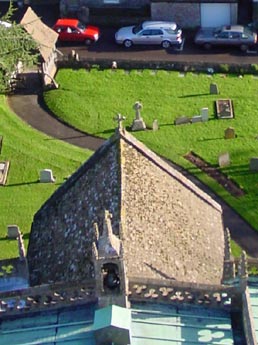 |
|||||||||||||
| Wrington’s Mediaeval Bell A particularly pretty feature of All Saints' church, Wrington, is the small bell-cote at the East end of the church. This was made in the mid fifteenth century, along with the rest of the nave. In it hangs the Sanctus Bell which has continuously been rung on Sundays for 550 years. It is used by clergy to call the congregation to church, when the big bells in the tower are not being rung; also to mark to outsiders when the mass is celebrated. The bell cote is one of very few in the country that still has its original bell. |
|||||||||||||
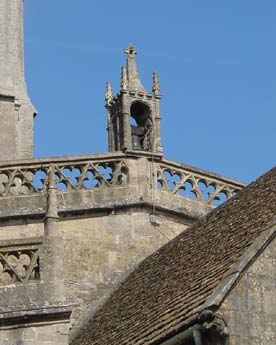 |
|||||||||||||
| The bell cote supports the bell and protects it from the weather. There are acoustic features – the open sides allow the sound to escape. Underneath the bell is a curved basin shape cut in the stone, that reflects the sound up and outwards. The bell is a mediaeval shaped bell – longer and slimmer than “modern” designs of the 17C onwards. Moulded in a band around its top is SANCT MARIA (Hail Mary), in mediaeval script-style letters. The bell was probably cast in Bristol, where there was a bell foundry at the time. It is also unusual in that it is still hung in the mediaeval style. When the Rector pulls on the bellrope near to the |
|||||||||||||
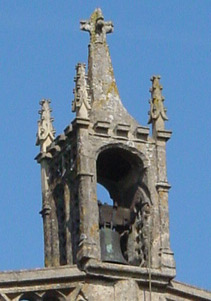 |
|||||||||||||
| altar, the rope runs up through a hole in the roof, over pulleys to a lever that is attached to the timber headstock from which the bell hangs. More modern bells have the rope attached to the rim of a big pulley or “wheel”, allowing the bell to be rotated 360 degrees. The lever system just allows the bell to be rocked, or “chimed”, with less |
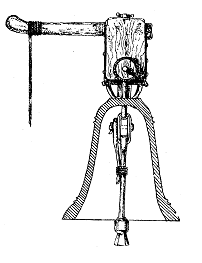 |
||||||||||||
| control as to the frequency of sounding, and was largely discontinued after 1600. | |||||||||||||
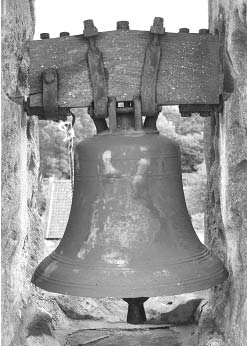 |
Another mediaeval feature of the bell is the way it is hung from the headstock. The bell was cast with loops at the top as a part of it, looking a bit like a crown. These are called “canons”, and have iron bolts threaded through them, which are then attached with iron straps and bolts to the headstock. More recent bells such as those in All Saints' church tower, have holes drilled through vertically through the top of the bell and are directly bolted to the headstock. The bell has a thick layer of oxide on its surface but is in good repair. It sounds “tinny” as if it is cracked, but shows no sign of a crack – the tuning of bells to produce a lovelier note is a more recent technology – mediaeval bells sounded much more like those in France and Spain that holidaymakers may have heard. |
||||||||||||
| Philip Kinsman All Saints' Tower Keeper |
|||||||||||||
 |
|||||||||||||